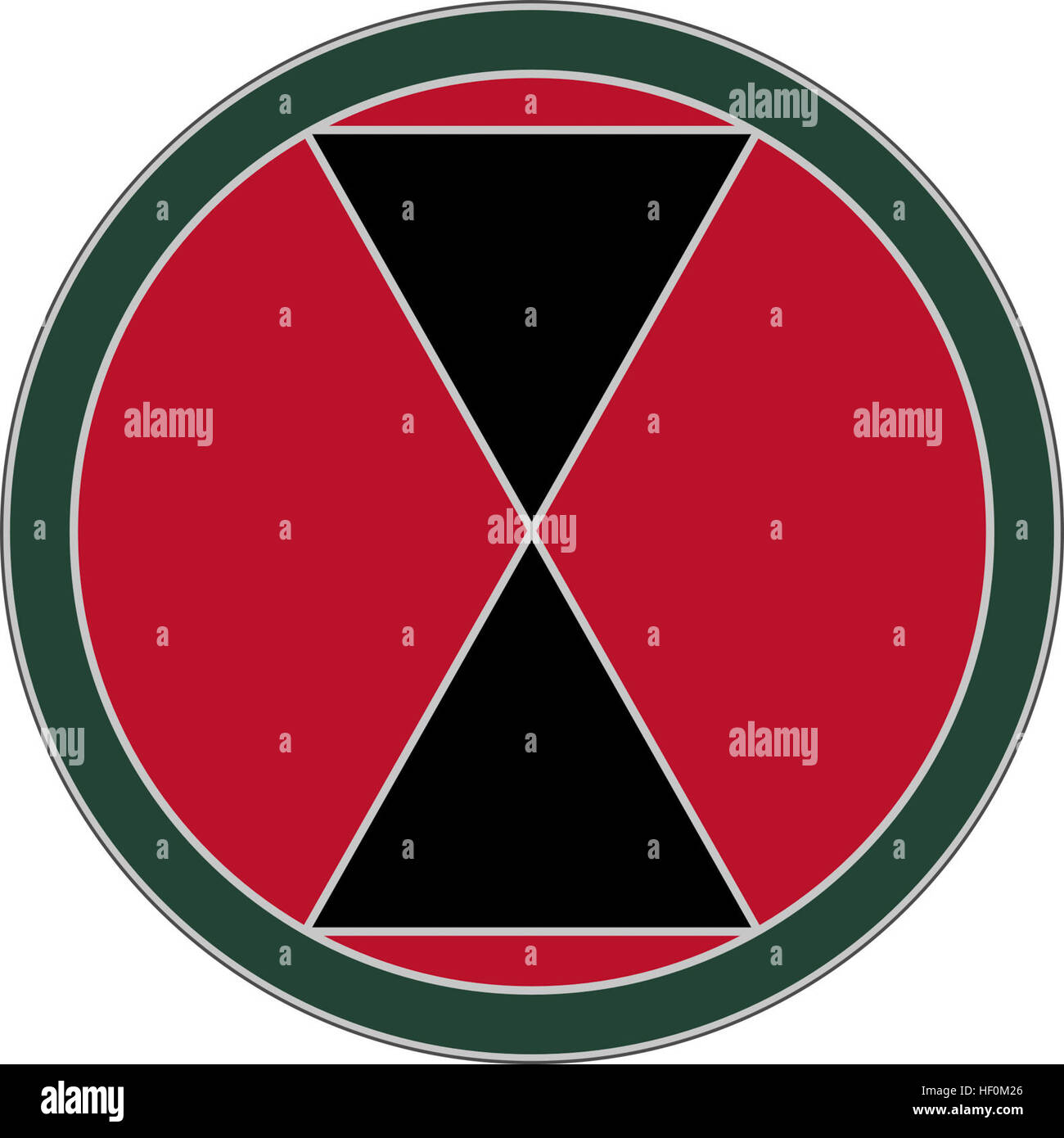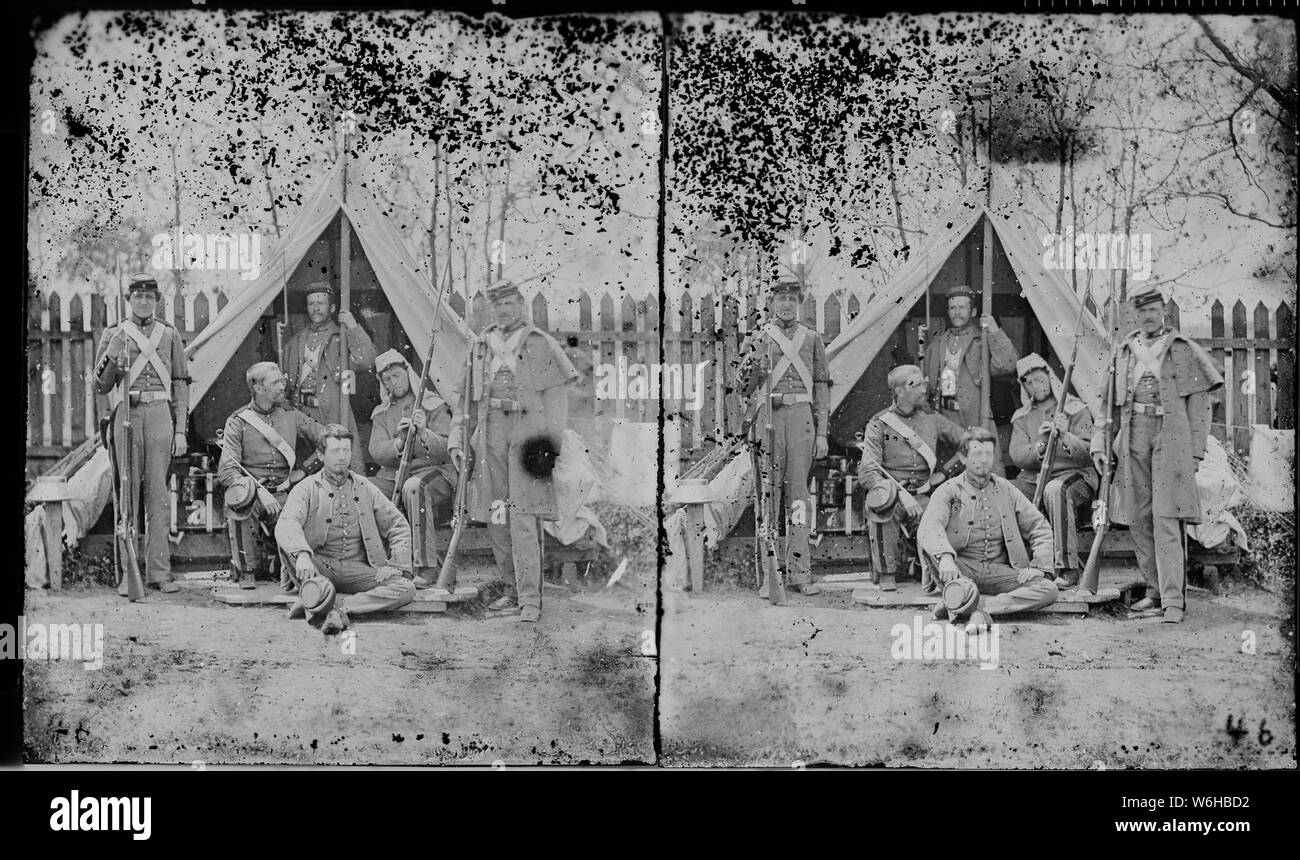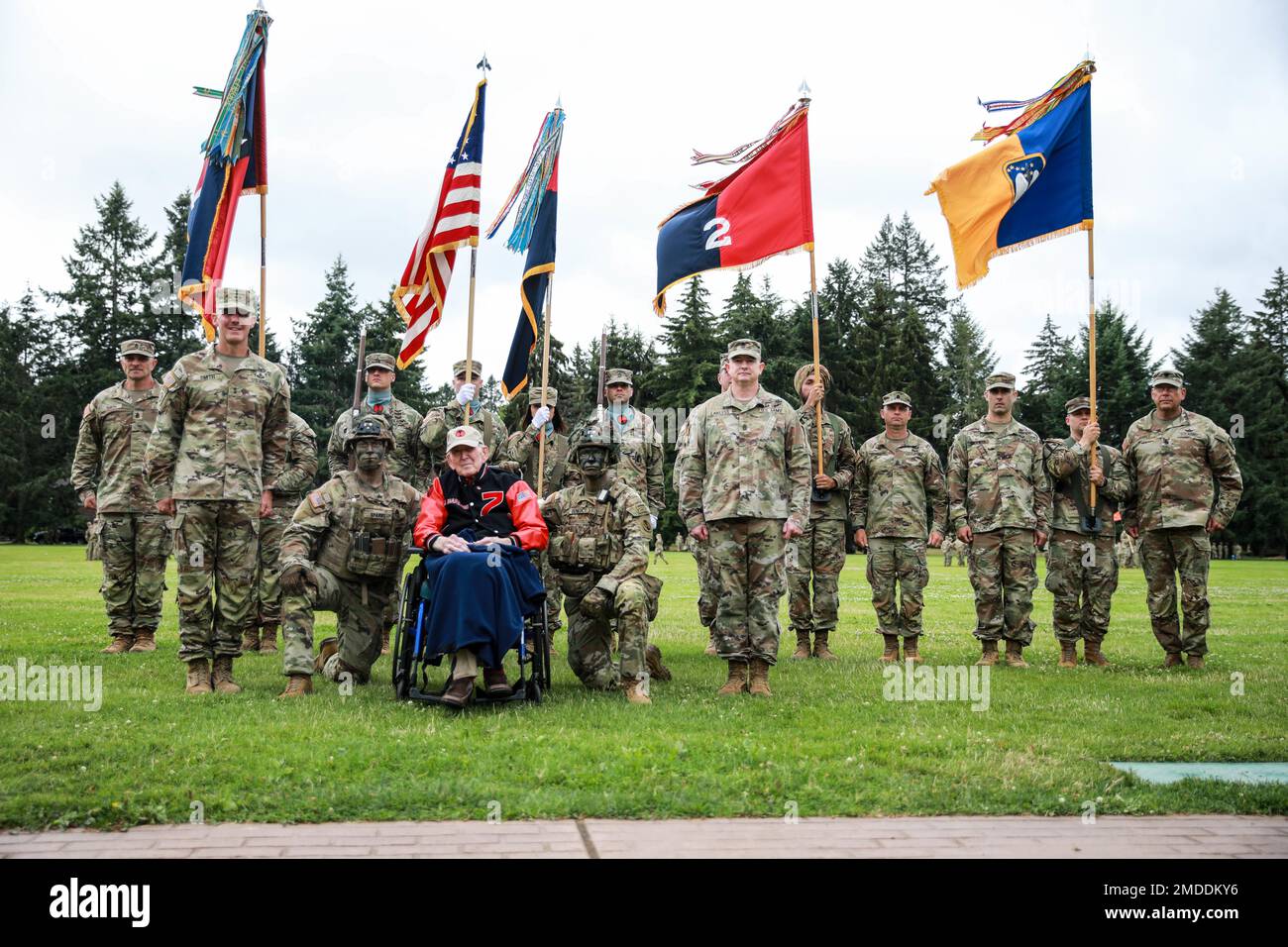The 7th Infantry Division was an infantry division of the British Army, first established by The Duke of Wellington as part of the Anglo-Portuguese Army for service in the Peninsular War, and was active also during the First World War from 1914 to 1919, and briefly in the Second World War in 1939.
Peninsular War
During the French Revolutionary Wars and early in the Napoleonic Wars, the largest permanent organised structure within the British Army was the brigade. The brigade, which consisted of two or more battalions grouped together under the command of a major-general, suited the small size of the army and the operations that it conducted. When needed, larger forces were organised on an ad hoc basis. This included multiple brigades grouped into 'lines' or 'columns'. As the army and its operations grew, it implemented divisions—a single formation of two or more brigades, usually commanded by a lieutenant-general. The division concept was not new and had been used by other European armies towards the end of the Seven Years' War (1756–1763). On 18 June 1809, Lieutenant-General Arthur Wellesley, commander of British forces in Spain and Portugal during the Peninsular War, reorganised his force into four divisions. The following year, with the further expansion of his force, Wellington created the 7th Division. It consisted of British, German, Portuguese, and French troops. Due to the mixture of nationalities as well as line and light regiments, the division had a multitude of uniforms. This coined the nickname of The Mongrels.
The division was present at the Battle of Fuentes de Oñoro the Battle of Vitoria the Battle of the Pyrenees the Battle of Nivelle the Battle of the Nive and the Battle of Orthez.
Second Boer War
The 7th Division was re-activated during the Second Boer War. The division took part in the Battle of Poplar Grove (March 1900) and the following occupation of Bloemfontein, then took part in Lord Roberts′ march to Pretoria.
First World War
The 7th Division was a Regular Army formation that was formed in September 1914 by combining units returning from garrison outposts in the British Empire at the outbreak of the First World War the previous month. During the war, the division fought in the First Battle of Ypres, the Battle of Neuve Chapelle, the Battle of Aubers Ridge, the Battle of Festubert, the Battle of Loos, the Battle of the Somme, the Battle of Passchendaele, and the Battle of Vittorio Veneto.
The division landed at Zeebrugge in Belgium on 6 October 1914 in an attempt to support the Belgian Army's defence of Antwerp, but was soon forced to retreat south-west as that city fell a few days later. It then played a crucial part in the stabilisation of the front during the First Battle of Ypres, preventing a German breakthrough, although at a high cost in terms of casualties. A floating division, the 7th was the first British Division to enter Ypres on 14 October. It was ordered to hold the line, while Field Marshal French brought up his remaining six divisions and redeployed them from the Aisne to the sea. The division held an 8 mile front for two weeks, opposite some 340,000 Germans. Some 18,000 soldiers strong on 15 October, the 7th left the line on 31 October, with just 2,000 troops remaining, mostly transport and supply.
The 7th Division fought in most of the major battles on the Western Front through to 1917 before being sent to the Italian Front for the remainder of the war. At the battle of Loos in late 1915, the division's General Officer Commanding (GOC), Major-General Thompson Capper, was killed in action at the height of the fighting. Unlike the first six regular divisions of the British Expeditionary Force (BEF), a third of whose strength was made up of regular reservists, the 7th Division was originally composed entirely of serving regular soldiers, which gave rise to the division's nickname, 'The Immortal Seventh'.
Arab Revolt
In 1936, the Arab Revolt broke out in the British Mandate of Palestine. British troops were dispatched, ending the first phase of the war by the close of the year. Fighting soon resumed and reached its zenith during the summer of 1938. With rising tensions in Europe, the British began to withdraw troops from Palestine for use elsewhere. The conclusion of the Munich Agreement—on 30 September 1938—calmed the rising tensions in Europe and averted war, allowing the British to resume their military build-up in Palestine.
The 7th Division was reformed the following month, and placed under the command of Major-General Richard O'Connor. The division was deployed to Palestine on internal security duties as part of a build-up of 18,500 men in the region. This force then began to suppress the revolt. Meanwhile, Palestinian guerrillas had overrun the Old City of Jerusalem. O'Connor's men proceeded to sweep the area, declaring the Old City free of militants on 19 October. The same day, the division seized Acre and by the end of the month were clearing Jaffa of rebels. Many Palestinians were detained and rebel activity significantly dropped off in the area. In the north, the 8th Infantry Division, under Major-General Bernard Montgomery, and Special Night Squads engaged in counter-terror operations, with O'Connor writing that one brigadier "always encouraged his men to be brutal". General Officer Commanding (GOC) British Forces in Palestine and Trans-Jordan Robert Haining wrote in late 1938 that "unnecessary violence, vindictiveness ..., [and] killing in cold blood" had to be curbed. O'Connor was likewise opposed to the measures in the north, and wrote "harshness and unnecessary violence on the part of our soldiers" had to be curbed. During the operation in Jerusalem, only four to nineteen guerrillas were killed. In early 1939, the revolt finally came to an end.
Second World War
On 31 August, just prior to the war beginning, the headquarters of the 7th Infantry Division relinquished command of all its troops. O'Connor and the divisional staff then left Jerusalem bound for Cairo, Egypt. From Cairo, the men moved forward to Mersa Matruh arriving on 7 September. The headquarters was then assigned all troops based there, with the exception of the 7th Armoured Division. The British Official Historian, I. S. O. Playfair, comments that this decision was undertaken to relieve the burden on Lieutenant-General Henry Maitland Wilson, GOC British Troops in Egypt, of "direct control of operations which had been his in addition to the command of all troops in Egypt". Due to the logistical problems in maintaining substantial forces across the Western Desert and on the Libya–Egypt border, Mersa Matruh was the forward British base of operations and supplied by rail. Positioned 200 miles (320 km) west of Alexandria and 120 miles (190 km) from the border, the location had been chosen to shield forward Royal Air Force (RAF) landing strips behind it and to defend the Nile Delta. Mersa Matruh also offered the British the strategy of drawing Italian or other forces forward to them, to allow a counter-attack after they ran into supply difficulties. On 3 November, the division was renamed the 6th Infantry Division.
General officers commanding
Victoria Cross recipients
Orders of battle
Peninsular War
During this period, brigades were referred to by their commander's names. Due to changes in command, the brigade names fluctuated frequently.
7th Division (1811–1814)
Division's first brigade:
- 1st Light Battalion, King's German Legion (until 6 December 1812)
- 2nd Light Battalion, King's German Legion (until 6 December 1812)
- Brunswick Oels
- 1st Battalion, 6th (1st Warwickshire) Regiment (from 6 December 1812)
- 3rd Provisional Battalion (2nd Battalion, 24th Regiment of Foot and 2nd Battalion, 58th Regiment of Foot Regiments of Foot) (from December 1812)
Division's second brigade:
- 51st (2nd Yorkshire West Riding) Regiment of Foot (Light Infantry)
- 85th (Bucks Volunteers) Regiment of Foot (Light Infantry) (until October 1811)
- 68th (Durham) Regiment of Foot (Light Infantry) (from 19 July 1811)
- 1st Battalion, 82nd Regiment of Foot (Prince of Wales's Volunteers) (from 28 November 1812)
- Chasseurs Britanniques
Portuguese brigade (attached):
- 7th Line Regiment
- 19th Line Regiment
- 2nd Caçadores
Militia brigade (attached 1814, but arrived after the Peninsular War had drawn to a close)
- 1st Provisional Battalion
- 2nd Provisional Battalion
- 3rd Provisional Battalion
Second Boer War
7th Division (1899–1900)
14th Brigade
- 2nd Battalion, Norfolk Regiment
- 2nd Battalion, Lincolnshire Regiment
- 1st Battalion, King's Own Scottish Borderers
- 2nd Battalion, Hampshire Regiment
- 26th Transport Company, Army Service Corps (partial)
- 14th Brigade Bearer Company
- 14th Brigade Field Hospital
15th Brigade
- 2nd Battalion, Cheshire Regiment
- 2nd Battalion, South Wales Borderers
- 1st Battalion, East Lancashire Regiment
- 2nd Battalion, North Staffordshire Regiment
- 26th Transport Company, Army Service Corps (partial)
- 15th Brigade Bearer Company
- 15th Brigade Field Hospital
Divisional artillery, Royal Field Artillery
- 18th Field Battery
- 62nd Field Battery
- 75th Field Battery
- Ammunition column
- 83rd Field Battery (during the course of 1900, the above three batteries were replaced by these three)
- 84th Field Battery
- 85th Field Battery
Divisional Cavalry
- 1st Company, City of London Imperial volunteers Mounted Infantry (by April 1900)
Royal Engineers
- 9th Field Company (left before April 1900)
- 26th Field Company (by April 1900)
First World War
7th Division (1914–1918)
20th Brigade
- 1st Battalion, Grenadier Guards (until 4 August 1915)
- 2nd Battalion, Scots Guards (until 8 August 1915)
- 2nd Battalion, Border Regiment
- 2nd Battalion, Gordon Highlanders
- 1/6th Battalion, Gordon Highlanders (from 5 December 1914, until 5 January 1916)
- 8th (Service) Battalion, Devonshire Regiment (from 4 August 1915)
- 9th (Service) Battalion, Devonshire Regiment (from 8 August 1915, until 13 September 1918)
- 6th Battalion, Cheshire Regiment (joined 9 January 1916, until 25 February 1916)
- 20th Brigade Machine Gun Company (formed 10 February 1916, until 1 April 1918)
- 20th Trench Mortar Battery (formed 14 February 1916)
21st Brigade (until 19 December 1915)
- 2nd Battalion, Bedfordshire Regiment
- 2nd Battalion, Green Howards
- 2nd Battalion, Royal Scots Fusiliers
- 2nd Battalion, Duke of Edinburgh's (Wiltshire Regiment)
- 1/4th Battalion, Queen's Own Cameron Highlanders (from 8 April 1915)
22nd Brigade
- 2nd Battalion, The Queen's (Royal West Surrey) Regiment (left December 1915)
- 2nd Battalion, Royal Warwickshire Regiment
- 1st Battalion, Royal Welch Fusiliers
- 1st Battalion, South Staffordshire Regiment (left December 1915)
- 1/8th Battalion, Royal Scots (Lothian Regiment) (from 12 November 1914, until 19 August 1915)
- 1/7th Battalion, King's (Liverpool Regiment) (from 11 November 1915, until 7 January 1916)
- 20th (Service) Battalion (5th City), Manchester Regiment (from 20 December 1915, until 13 September 1918)
- 2nd Battalion, The Royal Irish Regiment (from 22 May 1916, until 14 October 1916)
- 22nd Brigade Machine Gun Company (formed 24 February 1916, until 1 April 1918)
- 22nd Trench Mortar Battery (formed 14 April 1916)
- 24th (Service) Battalion (Oldham), Manchester Regiment (from 20 December 1915, until 22 May 1916)
- 2/1st Battalion, Honourable Artillery Company (from 6 October 1916)
91st Brigade (from 20 December 1915)
- 2nd Battalion, Queen's (Royal West Surrey Regiment)
- 1st Battalion, South Staffordshire Regiment
- 21st (Service) Battalion (6th City), Manchester Regiment (until 13 September 1918)
- 22nd (Service) Battalion (7th City), Manchester Regiment
- 91st Brigade Machine Gun Company (from 14 March 1916, until 1 April 1918)
- 91st Trench Mortar Battery (joined May 1916)
Divisional Mounted Troops
- 1st Northumberland Hussars (On 12 April 1915, two of the three squadrons were transferred to other formations leaving the 7th Division with just A Squadron. A Squadron left on 13 May 1916)
- 7th Cyclist Company (until 11 May 1916)
Divisional Artillery
- XIV Brigade, Royal Horse Artillery (left 10 February 1917)
- C Battery (until 19 October 1914)
- F Battery
- T Battery (from 21 December 1914)
- XIV RHA Brigade Ammunition Column
- D (Howitzer) Battery, Royal Field Artillery (RFA) (from 24 June 1915, until 20 December 1915)
- 509th (Howitzer) Battery, RFA (from 7 October 1916, until 13 February 1917)
- XXII Brigade, RFA
- 104th Battery
- 105th Battery
- 106th Battery
- XXII Brigade Ammunition Column
- 35th (Howitzer) Battery (from 17 May 1916)
- XXXV Brigade, RFA
- 12th Battery
- 25th Battery
- 58th Battery
- XXXV Brigade Ammunition Column
- 31st (Howitzer) Battery (from 17 May 1916)
- XXXVII (Howitzer) Brigade, RFA (from 24 June 1915, broken up 17 May 1916)
- 31st (Howitzer) Battery
- 35th (Howitzer) Battery
- XXVII (Howitzer) Brigade Ammunition Column
- III Heavy Brigade, Royal Garrison Artillery (until 4 March 1915)
- 111 Heavy Battery
- 112 Heavy Battery
- Heavy Battery ammunition columns
- 7th divisional ammunition column (until 16 May 1916)
- No. 7 Pom-Pom Section (A.–A.) (from 25 September 1914, until 20 December 1914)
- 5th Mountain Battery (from 26 March 1915, until 20 April 1915)
- Medium Trench Mortars, Royal Field Artillery
- X Battery (formed 25 February 1916)
- Y Battery (formed March 1916)
- Z Battery (formed March 1916, until 22 February 1918 when it was dispersed to X and Y batteries)
- Heavy Trench Mortars, Royal Field Artillery
- V Battery (formed June 1916, disbanded 12 November 1917)
Divisional Engineers, Royal Engineers
- 54th Field Company
- 55th Field Company (until 1 September 1915)
- 95th Field Company (from 30 August 1915)
- 2nd Highland Field Company (from 17 January 1915, until 24 January 1916)
- 3rd Durham Field Company (from 30 January 1916; later renumbered 528th (3rd Durham) Field Company, and then 528th Field Company)
- 7th Divisional Signal Company
Pioneers
- 24th (Service) Battalion, Manchester Regiment (from 22 May 1916)
Divisional Machine Guns
- 220th Machine Gun Company (from 25 March 1917)
- No. 7 Battery, Machine Gun Corps (formed on 1 April 1918 by merger of brigade and the 220th Machine Gun Companies)
Divisional Medical Services, Royal Army Medical Corps
- 21st Field Ambulance
- 22nd Field Ambulance
- 23rd Field Ambulance
Divisional Veterinary Services, Army Veterinary Corps
- 12th Mobile Veterinary Section (from 16 September 1914, although did not move to France until 7 October 1914)
Divisional Services
- 7th Divisional Train, Army Service Corps
- 39th Company
- 40th Company
- 42nd Company
- 86th Company
- 12th Divisional Employment Company, Labour Corps (from 21 May 1917, renumbered 210th in June 1917)
Arab Revolt
7th Division (1938–1939)
18th Infantry Brigade
- 2nd Battalion, King's Own Royal Regiment (Lancaster)
- 2nd Battalion, West Yorkshire Regiment
- 1st Battalion, Worcestershire Regiment
- 2nd Battalion, Black Watch
19th Infantry Brigade
- 1st Battalion, Buffs (Royal East Kent Regiment)
- 1st Battalion, Royal Northumberland Fusiliers
- 1st Battalion, Bedfordshire and Hertfordshire Regiment
- 2nd Battalion, Highland Light Infantry
Divisional troops
- 3rd Battalion, Coldstream Guards
- Royal Scots Greys
- Royal Engineers
- 54th Field Company
- 56th Field Company
- Royal Army Service Corps
- 14th Company
- 58th Company
- 67th Company
- 68th Company
See also
- List of British divisions in the First World War
- List of British divisions in World War II
- Structure of the British Army in 1939
- W. N. Hodgson, poet who served with the division and was killed during the Battle of the Somme
Notes
Footnotes
Citations
References
Further reading
External sources




